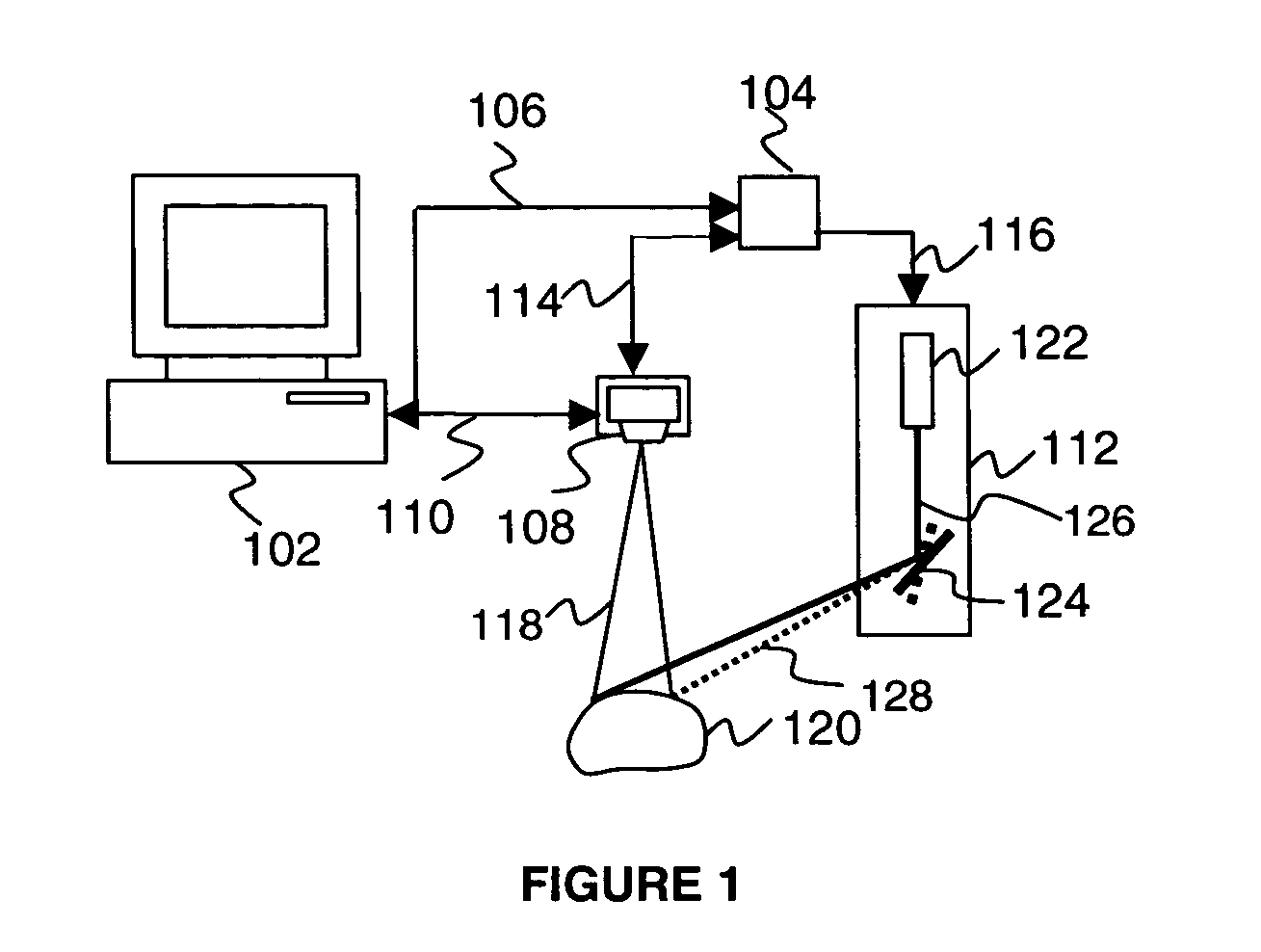Methods and systems for measuring the size and volume of features on live tissues
a technology of live tissues and features, applied in the field of size and volume measurement, can solve the problems of major source of inaccuracy or variability, obvious pitfalls of the instrument and methodology used to calculate volume as well as operator-related errors, and approach is fairly time-consuming
- Summary
- Abstract
- Description
- Claims
- Application Information
AI Technical Summary
Benefits of technology
Problems solved by technology
Method used
Image
Examples
Embodiment Construction
[0023]In the following detailed description, numerous specific details are set forth regarding the methods and systems of the present invention and the environments in which the methods and systems may operate in order to provide a thorough understanding of the present invention. It will be apparent to one skilled in the art, however, that the present invention may be practiced without such specific details. In other instances, well-known components, structures and techniques have not been shown in detail to avoid unnecessarily obscuring the subject matter of the present invention. Moreover, various examples are provided to explain the operation of the present invention. It should be understood that these examples are merely illustrative and various modifications may be made in accordance with the invention. It is contemplated that there are other methods and systems that are within the scope of the present invention.
[0024]Many designs of the 3D structured light scanners are known, ...
PUM
 Login to View More
Login to View More Abstract
Description
Claims
Application Information
 Login to View More
Login to View More - R&D
- Intellectual Property
- Life Sciences
- Materials
- Tech Scout
- Unparalleled Data Quality
- Higher Quality Content
- 60% Fewer Hallucinations
Browse by: Latest US Patents, China's latest patents, Technical Efficacy Thesaurus, Application Domain, Technology Topic, Popular Technical Reports.
© 2025 PatSnap. All rights reserved.Legal|Privacy policy|Modern Slavery Act Transparency Statement|Sitemap|About US| Contact US: help@patsnap.com



